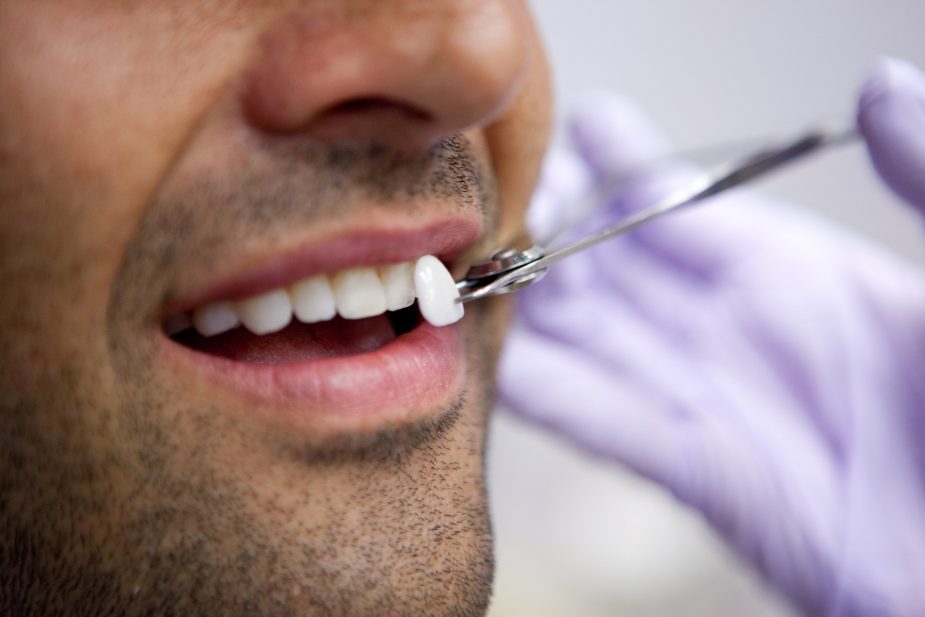What are the steps of taking care of Dental Veneers?
Veneers refer to thin layers of restorative materials usually bonded over the surface of the teeth with an aim of providing protection for the damaged teeth or improving the appearance of the teeth. What are veneers types? Veneers are categorized into two major groups based on the type of material used i.e. composite veneers and porcelain veneers.

What are porcelain veneers?
Porcelain Dental Veneers also referred to as dental porcelain laminates or dental veneers are thin porcelain wafers normally having a thickness of half a millimeter being fixed onto the teeth front with an aim of creating a smile makeover hence creating a beautiful outcome.
Generally, these veneers mimic teeth structures better as compared to other restorative materials due to being hard, capable of resisting wear, and capable of lasting for quite a long period of time. Mostly, Cosmetic Porcelain Veneers are utilized by dentists as a method of making cosmetic changes for various teeth problems.
Composite veneers also referred to as dental composite resins are forms of synthetic resins used as restorative adhesives or materials. These types of Porcelain Veneers are characterized by being: cheap, easy to manipulate, insoluble, insensitive to dehydration, and aesthetic. When going for veneers you have to keep veneers cost in mind.
What can be accomplished with veneers?
Veneers are used to cater for numerous tooth defects such as restoration of chipped or worn teeth. They can as well be used for discolored teeth especially if an individual has tetracycline teeth stains as the dentist is capable of altering the teeth shapes as well as controlling their exact shades. Porcelain veneers can also be used in covering up the gaps existing between the teeth, increasing the length of the teeth, or can also serve as substitutes to braces.
Steps were taken when making veneers for a teeth
Tooth trimming: This is the first process involving trimming the back of the enamel found on the tooth's front side where bonding of the veneer will take place. In most cases, this is meant to achieve the same thickness as that of the veneer to be fixed hence changing the overall size of the tooth dramatically.
Taking an impression of the trimmed tooth: This process involves making the copy of a trimmed tooth hence, using it for fabrication of the dental veneers. The impression procedure can usually take two scenarios i.e. creation of dental molds of the tooth via impression putty, then sending the copy of the tooth to a dental laboratory where porcelain or composite veneer is to be made. Fabrication of veneer usually takes between two-three weeks. The second scenario is whereby the impression is taken using a special machine consisting of a camera known as a dental milling machine.
After the tooth has been prepared for the veneer: There are two options here i.e. placement of temporally veneer or not. In a condition where no temporary porcelain veneer is placed: the front side of the tooth may appear a bit rough, some prominent tooth angles or corners may be irresistible to investigate continuously by the tongue, however, the patient will get used to the tooth shape within a short duration. The second case is where a temporary veneer is placed especially during the fabrication of the porcelain veneers before and after.

Taking Care of Veneers
The life span of veneers heavily depends on: how they are being used or taken care of.
The Veneers Houston will give some tips for veneers. Taking care of them encompasses: good oral hygiene i.e. flossing and brushing them on daily basis using a non-abrasive toothpaste containing fluoride. This helps in minimizing decay especially in those parts of the tooth not covered by the veneers.
Avoiding exposure of veneers to excessive forces especially porcelain veneers is highly recommended, as they are incapable of withstanding sharp impacts or strong forces. Activities likely to cause excessive force include: biting hard objects e.g. hairpins, ice, bottles, or fingernails.
Comments
Post a Comment